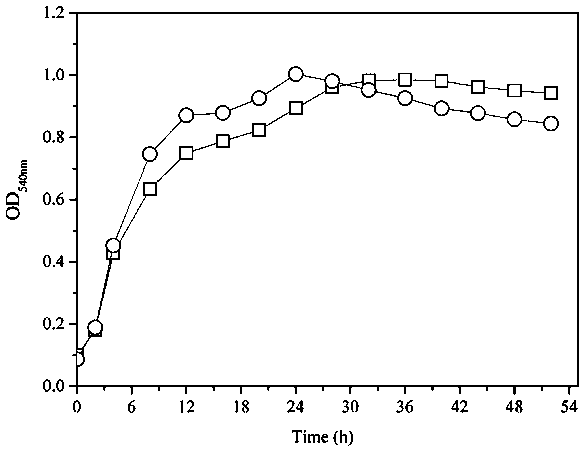A method for joint treatment of strontium ion pollution by using montmorillonite-urea decomposing bacteria
A technology of urea decomposing bacteria and combined treatment, which is applied in the restoration of polluted soil and other directions, can solve problems such as unreported research, and achieve the effects of abundant resources, reduced treatment costs, and low costs.
- Summary
- Abstract
- Description
- Claims
- Application Information
AI Technical Summary
Problems solved by technology
Method used
Image
Examples
Embodiment 1
[0017] Example 1 A method of using montmorillonite-urea decomposing bacteria to jointly control strontium pollution. According to the volume ratio of 1:20, montmorillonite is added to the water body with a strontium concentration of 1200 mg / L. After 4.5 hours, the ratio Add 1:40 urea, 1:50 peptone and the prepared ureolytic bacteria Klebsiella sp. to the above water body at a volume ratio of 1:40, and keep the temperature range between 28°C and 30°C. Use the montmorillonite-urea decomposing bacteria system to interact with strontium ions for 7 days, sample 10mL and centrifuge at 4000r / min for 10min, take 1mL of the supernatant, and use it to test the remaining strontium ion concentration in the water after dilution, and finally the removal rate of strontium ions 96%.
Embodiment 2
[0018] Example 2 A method of using montmorillonite-urea decomposing bacteria to jointly control strontium pollution. According to the volume ratio of 1:30, montmorillonite is added to the water body with a strontium concentration of 1200 mg / L. After 2.5 hours, the ratio Add urea at 1:40, peptone at 1:50, and prepared ureolytic bacteria Klebsiella sp. to the above water body at a volume ratio of 1:40, and keep the temperature range between 28°C and 30°C. Use the montmorillonite-urea-decomposing bacteria system to interact with strontium ions for 10 days, sample 10mL and centrifuge at 4000r / min for 10min, take 1mL of the supernatant, and use it to test the concentration of remaining strontium ions in the water after dilution, and finally the removal rate of strontium ions 95%.
Embodiment 3
[0019] Example 3 A method of using montmorillonite-urea decomposing bacteria to jointly control strontium pollution. According to the volume ratio of 1:35, montmorillonite is added to the water body with a strontium concentration of 1200 mg / L. After 4.5 hours, the ratio Add urea: 40, peptone 1:50 and prepared ureolytic bacterium Klebsiella sp. to the above water body at a volume ratio of 1:50, keeping the temperature range between 28°C and 30°C. Use the montmorillonite-urea decomposing bacteria system to interact with strontium ions for 8 days, sample 10mL and centrifuge at 4000r / min for 10min, take 1mL of the supernatant, and use it to test the concentration of remaining strontium ions in the water after dilution, and finally the removal rate of strontium ions 90%.
PUM
 Login to View More
Login to View More Abstract
Description
Claims
Application Information
 Login to View More
Login to View More - R&D
- Intellectual Property
- Life Sciences
- Materials
- Tech Scout
- Unparalleled Data Quality
- Higher Quality Content
- 60% Fewer Hallucinations
Browse by: Latest US Patents, China's latest patents, Technical Efficacy Thesaurus, Application Domain, Technology Topic, Popular Technical Reports.
© 2025 PatSnap. All rights reserved.Legal|Privacy policy|Modern Slavery Act Transparency Statement|Sitemap|About US| Contact US: help@patsnap.com


